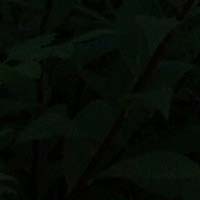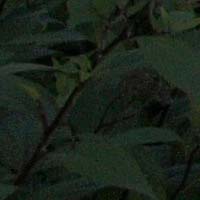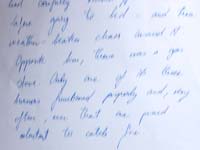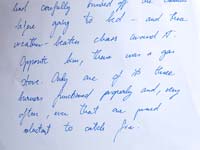Olympus E-520 Review
Review Date: July 30th 2008
Author: Zoltan Arva-Toth
Leave a comment about this review
|
Image Quality
All of the sample images in this Review were captured using the 10 megapixel Large Super Fine JPEG setting, producing a file that is around 6.5Mb in size.
During the review, the Olympus E-520 produced photos of excellent quality. The JPEG output of its predecessor the E-510 may have suffered from an over-contrasty default tone curve, but the E-520 in the Natural Picture Mode yielded very good results right out of the camera. Colours were rich and vibrant without looking over-saturated, and the photographs had very good tonality. The newly implemented Shadow Adjustment Technology really helped when shooting JPEG in harsh, uncontrolled lighting. The sensor turned out to have a more than respectable dynamic range, although you will have to look beyond Olympus' own RAW development tools to get the maximum out of it. The camera has also been proven to be fairly sensitive to infrared light, and its Live View Boost feature is a real boon to photographers wishing to compose and focus with an IR filter attached to the lens. Photos taken in visible light show excellent detail across the camera's entire sensitivity range, with high-ISO noise being largely unobtrusive, making the Olympus E-520 an ideal tool for those who like big, detailed prints. There has been speculation about the E-520 having an overly strong anti-alias filter, but while it may indeed have one that's somewhat stronger than its predecessor's, I have actually found indications that it may still be a bit too weak. Sometimes it failed to prevent false detail or moirι pattern from appearing in photos taken with a lens that can clearly out-resolve the sensor, as can be seen near the upper right corner of the photo of the Irish pub in the Sample Images section. This is about the only complaint I have about the E-520's image quality, and to be fair, I did not see anything like that in any of the RAW shots, so it might simply be a rare JPEG processing bug that has nothing to do with the AA filter. At any rate, this is a minor issue that is unlikely to affect the majority of photographs taken with the E-520.
Noise
The Olympus E-520 has five selectable sensitivity settings, ranging from ISO 100 to 1600. Like its predecessor but unlike most of the competition the E-520 lets you turn the in-camera noise filtering completely off. You may also set it to Low, Standard or High. The best choice seems to be Low, and this is the setting the test shots whose crops you see below were taken at. By scrutinising the images at 100% magnification on screen, it's not terribly difficult to see evidence of shadow noise at medium to high ISOs, but it is tightly packed and finely grained, so it does not really appear in print. I had a commercial lab print one of the ISO 1600 shots on A4 size Kodak Royal Digital matte paper and couldn't see a trace of noise, even though I knew where to look for it. Therefore I would say that unless you are shooting double-page spreads for the highest-quality glossy magazines or coffee table books, you can safely use whatever ISO speed you deem appropriate in the given shooting conditions. The only practical difference between low- and high-ISO shots is that the former lend themselves better to tweaks like levels-, curves- or colour balance adjustments in post-processing. Here are some 100% crops which show the noise levels for each ISO setting.
ISO 100 (100% Crop) |
ISO 200 (100% Crop) |
 |
 |
ISO 400 (100% Crop) |
ISO 800 (100% Crop) |
 |
 |
ISO 1600 (100% Crop) |
|
 |
|
File Quality
Olympus used to assign less-than-obvious abbreviations to the various compression levels available on their cameras, but they have lately taken to using more sensible labels including Basic, Normal, Fine and Super Fine. The last one of these offers the best quality at the very mild compression ratio of 1:2.7. Be aware though that it is not among the selectable options by default you have to first enable it via the menu. Full-resolution Super Fine JPEGs typically occupy between 6 and 7 megabytes on the card; this is about 3 megabytes less less than the size of the losslessly compressed RAW files. Here are some 100% crops which show the quality of the various options, with the file size shown in brackets.
10M Super Fine (6.45Mb) (100% Crop) |
10M Fine (4.63Mb) (100% Crop) |
 |
 |
10M Normal (2.15Mb) (100% Crop) |
10M Basic (1.37Mb) (100% Crop) |
 |
 |
Sharpening
Here are two 100% crops which have been Saved as Web - Quality 50 in Photoshop. The right-hand image has had some sharpening applied in Photoshop. The out-of-the camera images at the default setting are a little soft and benefit from some further sharpening in a program like Adobe Photoshop. Alternatively you can change the in-camera sharpening level if you don't like the default results.
Original
(100% Crop) |
Sharpened (100% Crop) |
 |
 |
 |
 |
Shadow Adjustment
One of the improvements over the E-510 is the inclusion of Shadow Adjustment Technology (SAT), a useful feature for JPEG shooters. Similarly to Nikon's D-lighting, Sony's DRO etc., this solution brightens the shadows in a high-contrast scene without affecting the midtones or the highlights. The way to engage SAT is to set the tonal gradation to Auto via the Super Control Panel. Although this option is always at your disposal, remember that it is meant to be used in strong, contrasty lighting at base ISO. Below you can see a comparison of Normal and Auto gradation; the difference is noticeable in the shadowed areas on the left side of the photo, and also in the tree foliage. It is worth noting that even when gradation is set to Normal, the E-520 applies a much more sensible default tone curve to the JPEGs than the E-510. Two other, special-use gradation settings are available on the camera, Low Key and High Key. The former is for photographing dark subjects against dark backgrounds, whereas the latter is for light-toned subjects against a light-toned background. An example of a high-key photo is the coffee cup shot in the Sample Images section.
Normal |
Normal (100% Crop from bottom-left corner) |
 |
 |
Auto |
Auto (100% Crop from bottom-left corner) |
 |
 |
Highlight Headroom
Although the E-520 has less of a tendency to blow highlights in JPEGs than the E-510 and when it does, it does so more gently plus you can opt to expose for the highlights and dial in Auto gradation to let SAT take care of the shadows, there may be times when you wish the camera had more highlight range than what is available by shooting JPEG. Therefore we have investigated if there was any headroom in the RAW files. To do this, we photographed a scene in cloudy bright conditions, when the subject received no direct illumination from the sun, and the sky was several stops brighter. With many digital cameras, if you exposed for the subject the buildings in this case you would end up with a completely burnt-out sky in your photo. This is exactly what we can see in the straight conversion, to which no adjustment was made during RAW development. It accurately represents what we would have been stuck with if we had shot JPEG. Next, we dialled in some negative exposure compensation in Olympus Master, the RAW developer shipped with the camera. This had only minimal benefit. Most of the sky was now uniformly grey instead of white, but still without any details or tonal transitions. Before concluding that there was basically no highlight headroom in the RAW files, we converted the original ORF file into DNG using the new Adobe DNG Converter 4.5 Beta, and fed it into Adobe Camera RAW. As you can see in the third sample, this program brought back all the seemingly lost sky detail. In conclusion, we can establish that there is at least 1½ stops of RAW headroom above the roughly 2½ stops of highlight range available in the JPEGs, which, when added to the approximately 5 stops of usable shadow range at base ISO, makes for a very decent dynamic range but you have to look beyond Olympus Master to extract it all.
Straight |
Olympus Master |
 |
 |
Adobe Camera RAW |
|
 |
|
Infrared
Although digital cameras typically have strong IR cut filters built in to avoid unwanted colour casts in visible-light photos, most of them are still more or less sensitive to the near infrared part of the spectrum. In order to take IR shots, one has to attach an R72 type infrared filter to the lens. With a typical SLR, this requires that you compose before the filter is mounted, because once it is on, you cannot see a thing through the viewfinder. Consequently if you take a number of infrared photos in succession, you have to detach and attach the IR filter before each shot. We were curious to find out if the Live View feature of the E-520 could be used to circumvent this. The answer is yes, but simply going to Live View is not enough; you also have to enable Live View Boost from the menu. If you do so and have a fast lens mounted to the camera, you should have no problem composing on the LCD even with an R72 filter in front of the lens. In fact you can even use the 10x magnification feature within Live View for accurate manual focusing. Remember that IR shots tend to have very low native contrast, so it is recommended that you shoot RAW. This is what I did when capturing the photo below, which was then converted into a 16-bit TIFF with Olympus Master, and finalised in an image editor. The exposure was 10 seconds at f/8 this is quite typical in IR photography, so use a sturdy tripod.
Infrared |
Infrared (100% Crop) |
 |
 |
Flash
The flash settings on the Olympus E-520 are Auto, Manual, Red-eye reduction, Slow syncro with red-eye reduction, Slow syncro, 2nd curtain and slow syncro, Fill-in for exclusive flash. These shots of a white coloured wall were taken at a distance of 1.5m using the ED 50-200mm f/2.8-3.5 SWD lens.
Flash Off - Wide Angle (100mm) |
Auto Flash - Wide Angle (50mm) |
 |
 |
Flash Off - Telephoto (400mm) |
Auto Flash - Telephoto (400mm) |
 |
 |
And here are some portrait shots. The built-in flash caused no red-eye in this test, so there is no real difference between the two shots. (A general note on flash usage with an E-520: using the pop-up flash might not always be a good idea, as some lenses typically the bigger wide-angle ones may cast a shadow on the subject. In these cases, use one or more external unit[s].)
Fill In |
Fill In (100% Crop) |
 |
 |
Fill In + Red-eye |
Fill In + Red-eye (100% Crop) |
 |
 |
Night Shot
The Olympus E-520 lets you dial in shutter speeds of up to 60 seconds and has a Bulb mode as well for exposure times as long as 30 minutes, which is very good news if you are seriously interested in night photography. The shot below was taken using a shutter speed of 2.5 seconds, aperture of f/8 at ISO 100. We've included a 100% crop to see what the quality is like.
Night Shot |
Night Shot (100% Crop) |
 |
 |
Image Stabilisation
The Olympus E-520 comes with a sensor-shift image stabilisation (IS) system, which allows you to take sharp hand-held photos at slower shutter speeds than with cameras that lack this feature. These examples are 100% crops from two photos taken at 1/10 second at the 70mm equivalent setting. As you can see, the one taken with IS turned off is really blurry, whereas the one captured with the help of the stabilisation system is sharp. Please note that image stabilisation may not be enough if the shutter speed is really slow. In these cases, use a tripod and turn IS off to prevent it from causing motion blur by trying to counteract vibration that isn't there.
| Image Stabilisation
Off (100% Crop) |
 |
 |
| Image Stabilisation On (100% Crop) |
 |
 |
|
![]() PhotographyBLOG
is a member of the DIWA
organisation. Our test results for the Olympus E-520 have been submitted to DIWA
for comparison with test results for different samples of
the same camera model supplied by other DIWA
member sites.
PhotographyBLOG
is a member of the DIWA
organisation. Our test results for the Olympus E-520 have been submitted to DIWA
for comparison with test results for different samples of
the same camera model supplied by other DIWA
member sites.
